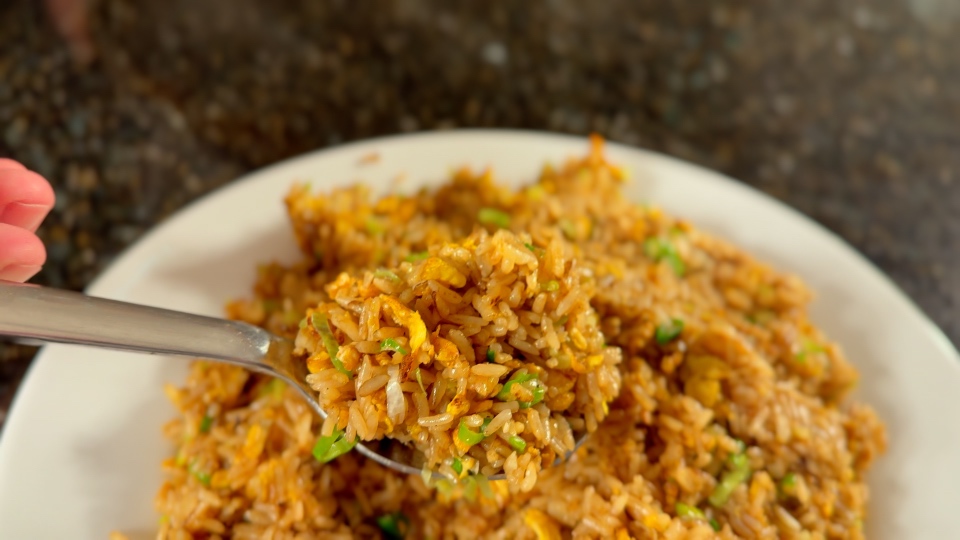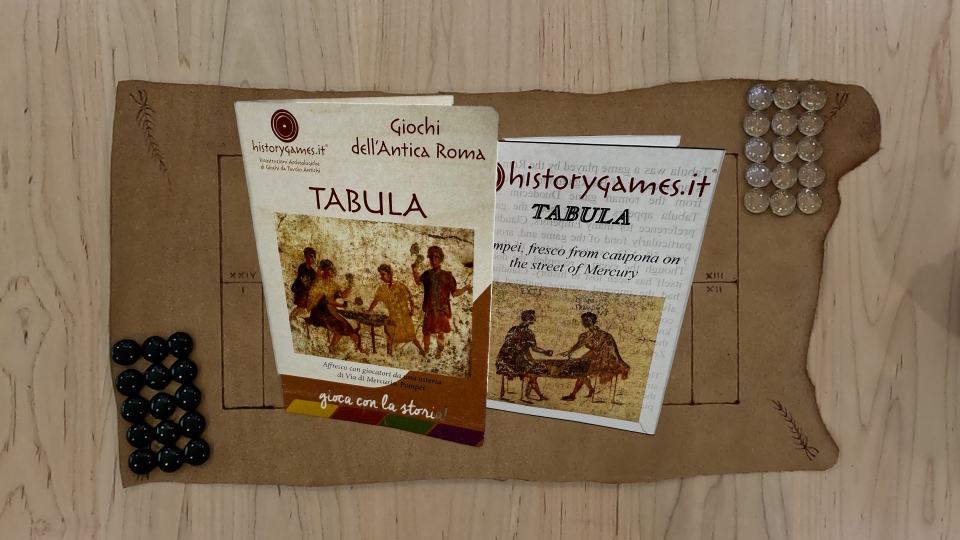Demi-Glace
One of the worlds ultimate sauces rooted in French tradition. We use a recipe similar to what is taught by The Culinary Institute of America. Make it in bulk and freeze in small quantities to enjoy in braises, soups, stews, pan-sauces and more.
Demi-glace is a concentrated stock thickened with roux that serves as a base for many classic dishes. Demi-glace takes time and very few restuarnts (even fine-dining) make the effort anymore. Commercial shelf-stable versions are available at a premium, but they rarely stand-up to the quality of homemade. Make it in volume a couple times a year and freeze in 1/2 cup quantities. Use collagen-rich veal or beef bones from the neck, back or knuckles, but not marrow bones. The process starts with making brown beef stock which is thickened to form sauce Espagnol then added to more stock and reduced to produce demi-glace.

Beef neck bones are often the least expensive option and should be widely available if you ask your local butcher or supermarket meat department. They have a good amount of collagen that will melt out into gelatin along with bits of meat that flavor the stock. Normally this product arrives in larger pieces that your butcher can run through the band-saw for you. Spread them out and roast in a 450°F oven until deep golden-brown.
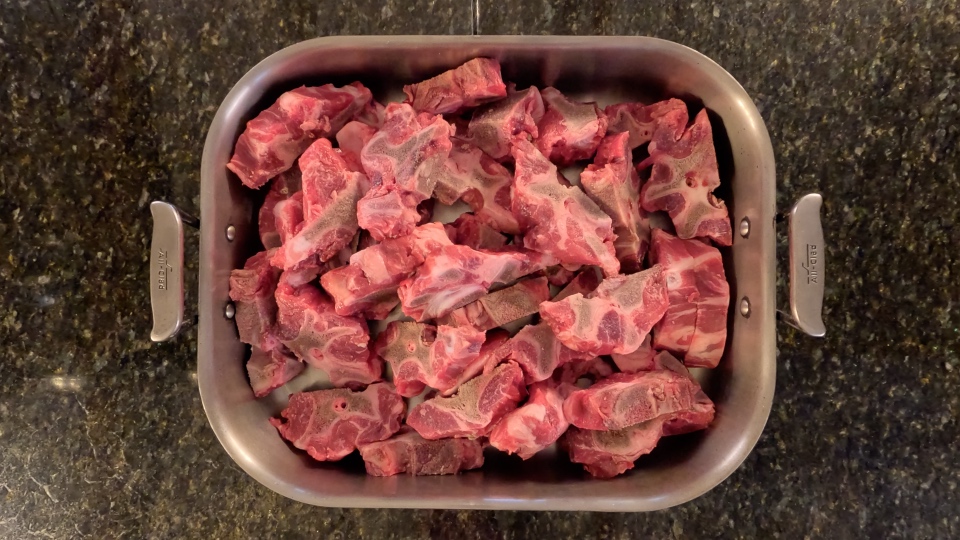
Mirepoix, a mixture of onions, carrots and celery are sauteed and lightly browned with tomato paste to form a pinçage. Adding a whole clove or two of garlic at this step develops additional flavor.
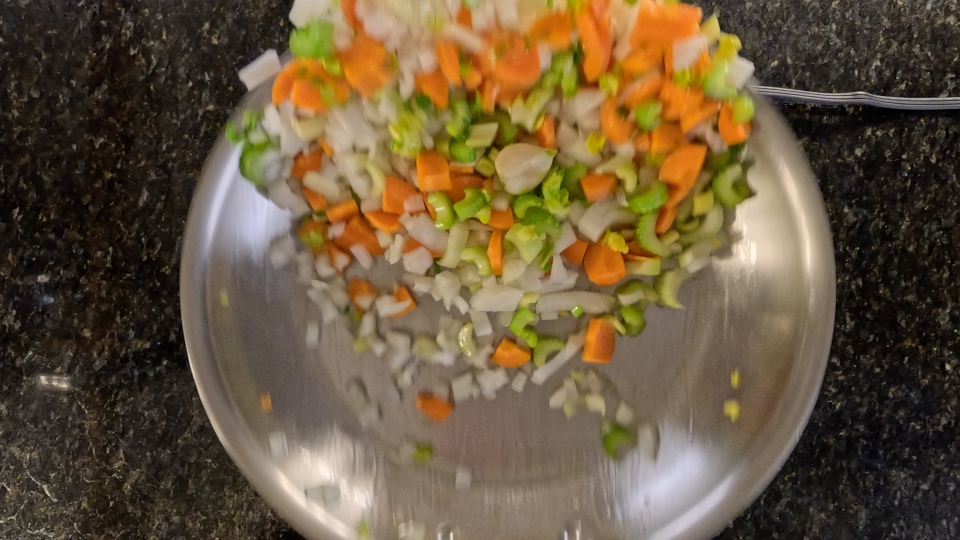
After the connective tissues from the neck bones have melted into the liquid, the pinçage is added near the end along with herbs and spices to flavor the stock. This helps to keep their flavors and aromas fresh.
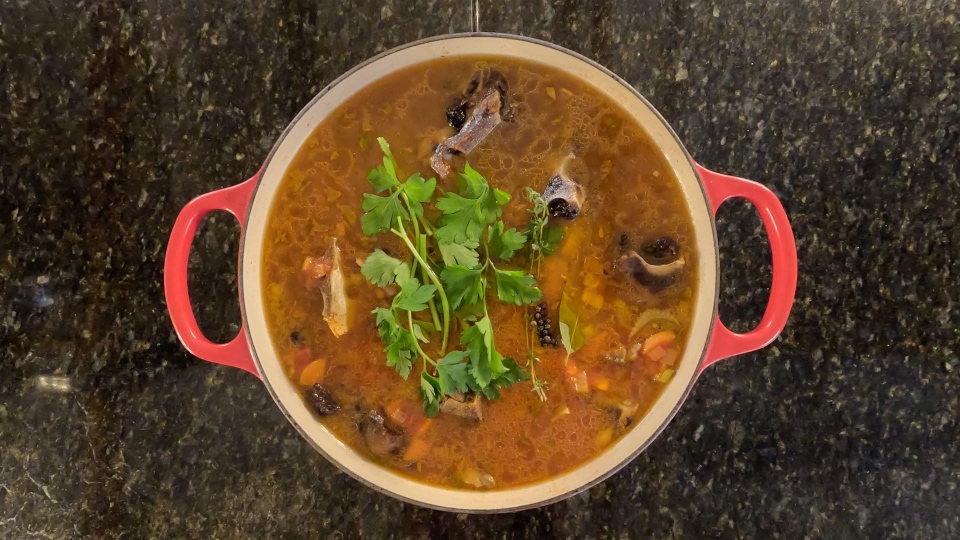
Separating the stock from the solids and rendered fat is the most labor-intensive aspect of the process. We normally remove large solids with tongs, then ladle the stock mixture into a mesh strainer sitting atop a gravy separator. The strainer catches the solids, and the gravy separator allows you to pour the stock off into a separate pot. The rendered fat can be saved for making roux. The solids can be composted.
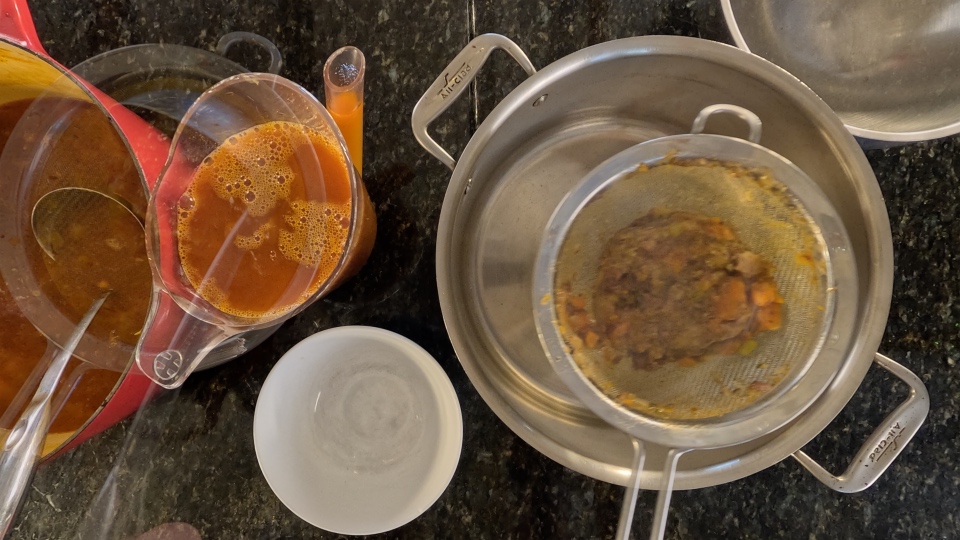
Brown Beef Stock
Yield: 1 Gallon
Ingredients:
- 10 Lbs Veal/Beef Neck/Back Bones
- 8oz Yellow Onion, Diced
- 4oz Carrot, Diced
- 4oz Celery, Diced
- 1 Clove Garlic
- 6oz Tomato Paste
- 2 Sprigs Parsley
- 2 Sprigs Fresh Thyme
- 1 Bay Leaf
- 1/2 Tsp Black Peppercorns
- 1 Tbsp Vegetable Oil
Instructions:
- Roast the bones in a 450°F oven until deep golden brown. Transfer the bones to a large stock pot and deglaze the roasting pan with boiling water, then pour off into the stock pot. Cover the bones with 4-6 quarts of water. Simmer for 5 hours adding boiling water to keep the bones covered as needed.
- Heat the oil in a 12" skillet over medium-high heat and sauté the onions, carrots and celery until lightly browned. Add the tomato paste and continue to cook until fragrant and lightly browned. Deglaze the pan with a cup of water.
- Add the pinçage to the stock pot along with the remaining ingredients and simmer for 1 hour keeping the liquid level above the bones with additional boiling water as needed.
- Separate the solids, stock and rendered fat using an additional pot, mesh strainer and gravy separator. If yield is more than 1 gallon, reduce by simmering the stock uncovered. If yield is less than one gallon, add an appropriate amount of water back to the strained solids, bring to a simmer and strain into the already separated stock.
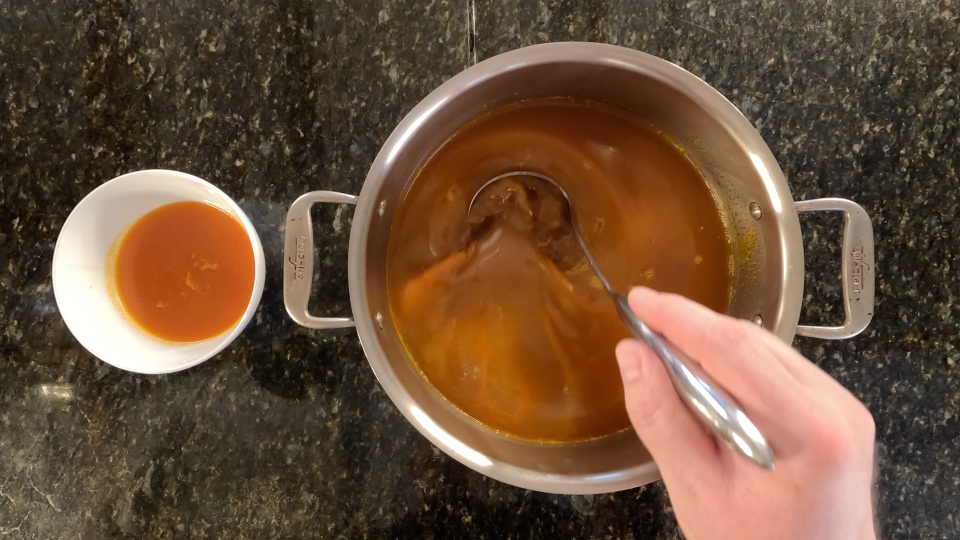
Brown beef stock can be used directly as the foundation for fantastic soups like Beef and Barley or French Onion. This recipe uses no salt which permits further reduction to concentrate flavor. The extreme example would be Glace de Viande where brown stock is reduced to a syrup for flavoring other dishes. Brown beef stock can also be thickened with a roux to form Sauce Espagnole. Use the fat rendered and separated in the stock making process for additional flavor and economy.
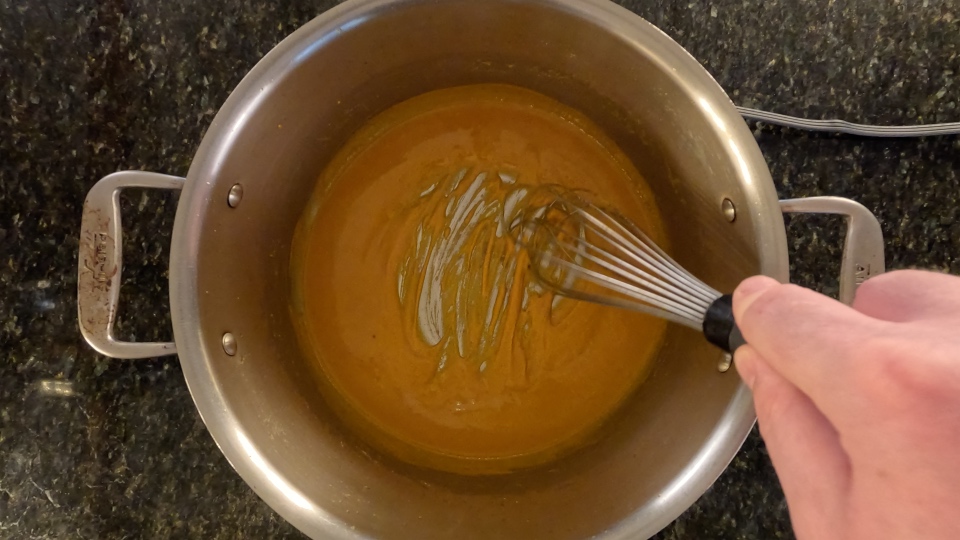
Sauce Espagnole
Yield: 2 Quarts
Ingredients:
- 2 Quarts Brown Beef Stock
- 4oz Rendered Beef Fat or Vegetable Oil
- 4oz All Purpose Flour
- Kosher Salt
Instructions:
- Add the fat or oil to a pot over medium heat and whisk in the flour to form a smooth roux. Continue whisking until the color transitions to a golden-brown.
- Being mindful of steam and spattering, add 2-3 cups of the stock to the roux and whisk into a smooth paste. Continue adding stock 2-3 cups at a time whisking to incorporate.
- Bring the sauce to a full boil over high heat then reduce to medium-low and simmer for 15 minutes. Whisk to ensure the sauce does not stick to the bottom of the pan.
- Season with salt to taste.
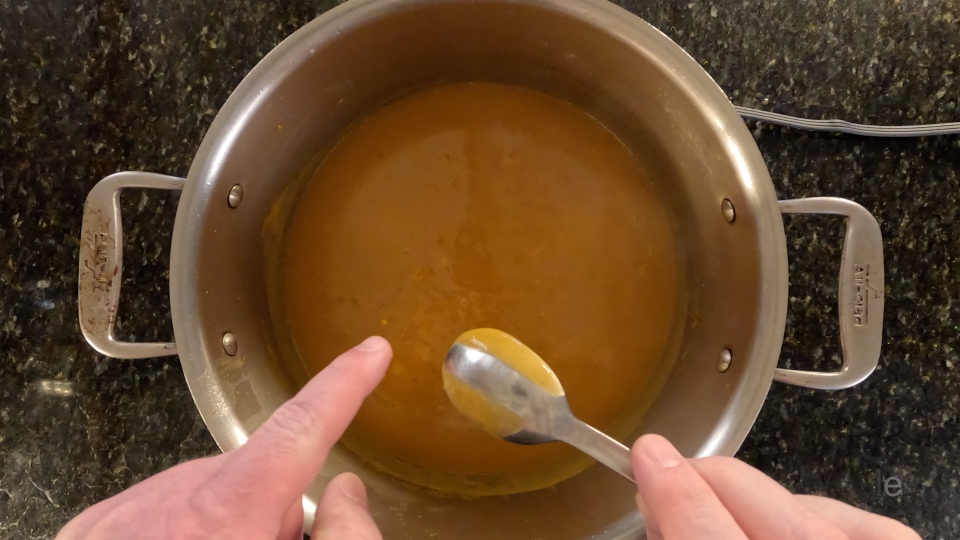
Sauce Espagnole is a classic brown sauce and serves as a quick gravy, but is much better when turned into demi-glace. Demi-glace is equal parts sauce Espagnole and brown stock reduced by half to concentrate its flavor.
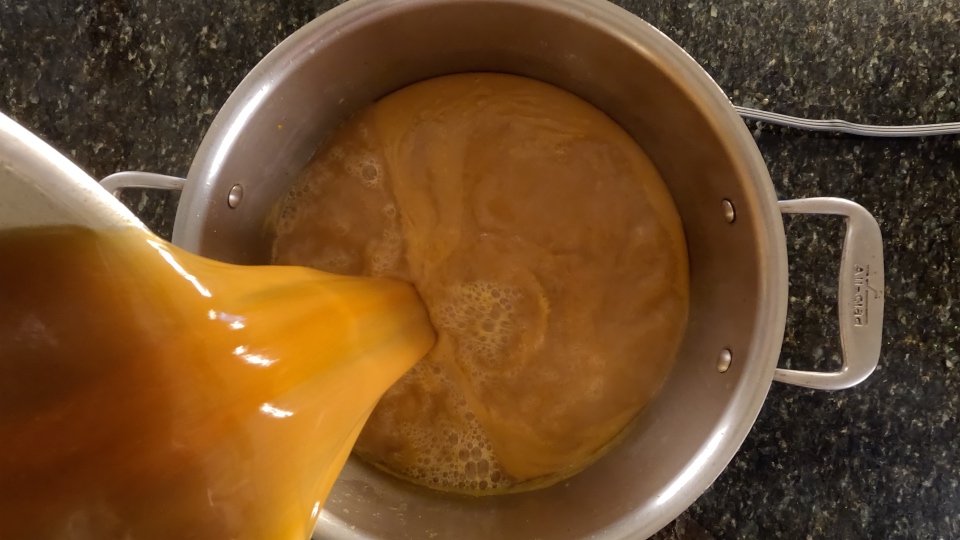
Demi-Glace
Yield: 2 Quarts
Ingredients:
- 2 Quarts Sauce Espagnole
- 2 Quarts Brown Beef Stock
Instructions:
- Add the ingredients to a pot over medium-high heat and reduce by half.

Demi-glace should have deep flavor and be slightly sticky from the concentrated gelatin. It is combined with other ingredients to make some of the most famous sauces in French cuisine like Bordelaise and Bourguignonne. A common theme of these is marriage with wine which brings bright fruity flavors and acidity. When added to soups or braises it lends body and depth of flavor. Here we make a simple beef braise with demi-glace, red wine, shallots and dried mushrooms.
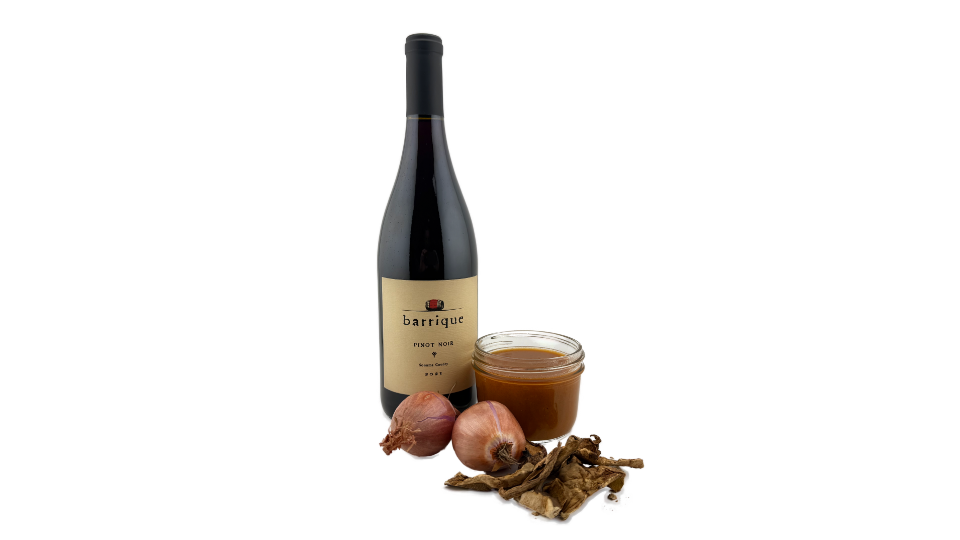
Dried porcini mushrooms also known as cepes are very earthy and fragrant. Buzz them up in a bladed spice or coffee grinder to make a fine powder that dissolves in liquid. Be sure to sift the powder to remove any hard bits. Kept in an air-tight container the powder will last months. It's wonderful in mushroom risotto.
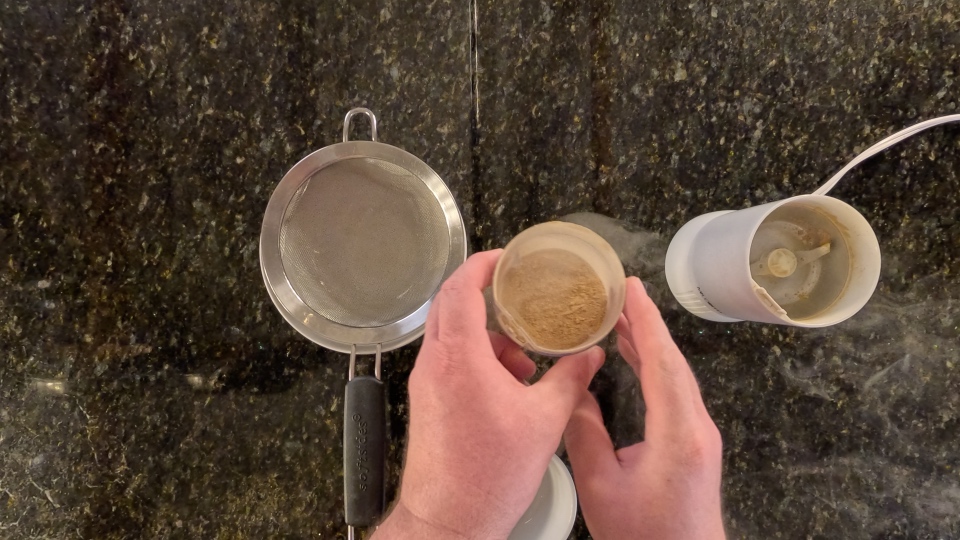
While we use beef shoulder or chuck here, you can really use anything from short ribs to shanks to meatballs. The meat is really just a carrier for the sauce. For shoulder, trim out any thick bands of fat which may not fully melt and can be unpleasant to eat.
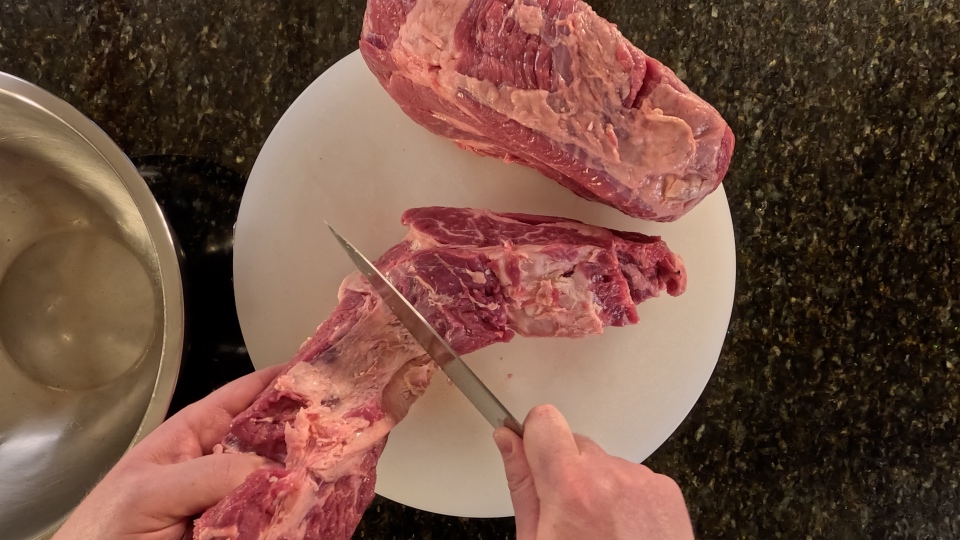
Brown the meat in batches being careful not to crowd the pan. Don't burn the brown bits or fond on the bottom of the pan. After removing each batch of meat add some water to bring it up and reserve with the browned meat. Return the pot to the burner, wait for any residual droplets to evaporate and then add a bit more vegetable oil.
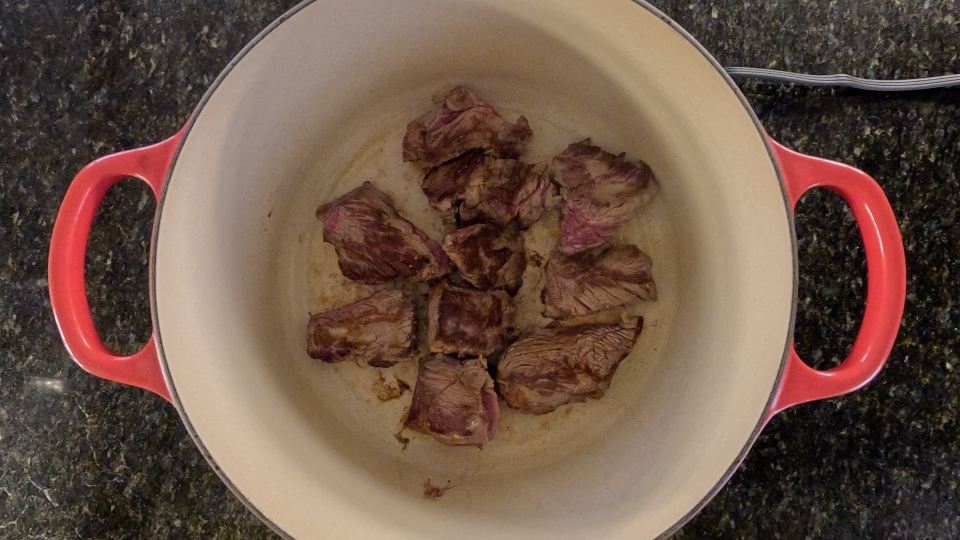
After the last batch of browning, add the shallots and a splash of water. This will keep the fond from burning and help the shallots to caramelize faster. Then everything goes into the pot and into the oven. Very easy.
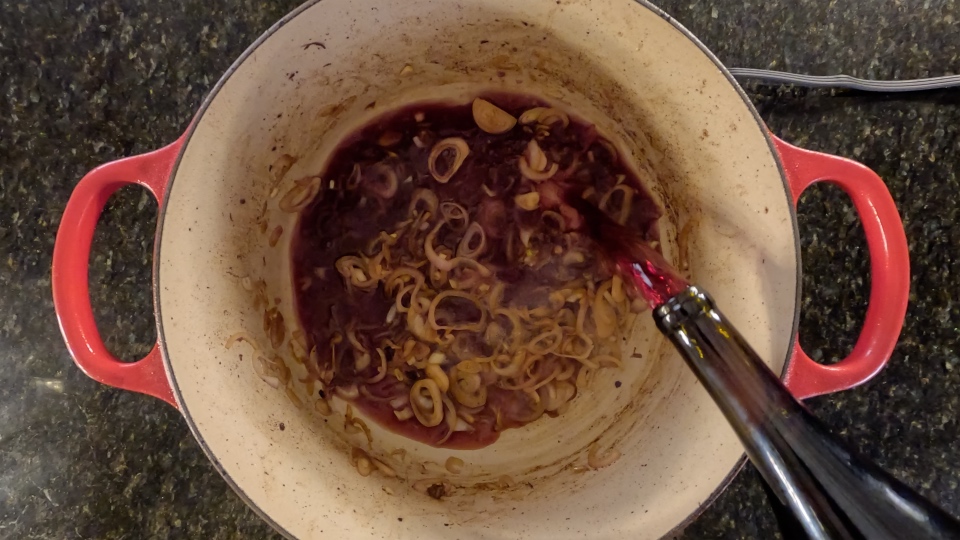
Braised Beef
Serves 12
Ingredients:
- 6 Lbs Trimmed Beef Shoulder
- 3 Tsp Vegetable Oil
- 8oz Shallots, Sliced
- 1 750mL Bottle Dry Red Wine such as Pinot Noir
- 1/2 Tsp Dried Porcini Powder
- 1 Quart Demi-Glace
- Kosher Salt
Instructions:
- Heat 1 teaspoon of oil in a dutch oven over high heat until just smoking. Brown the beef in batches removing the fond in between with a small amount of water reserving the juices with the meat.
- Add the sliced shallots to the dutch oven with a small amount of water. Reduce the heat to medium and boil the water away, then caramelize the shallots.
- Add the wine, mushroom powder and demi-glace to the dutch oven and whisk to combine. Add the meat and reserved juices along with 1/2 teaspoon of Morton kosher salt. Cover the dutch oven and place in a preheated 350°F oven for 2.5 to 3 hours until the meat is tender.
- Skim any rendered fat at the surface. Adjust sauce consistency if needed by reducing over medium heat or adding a small amount of water. Season to taste.
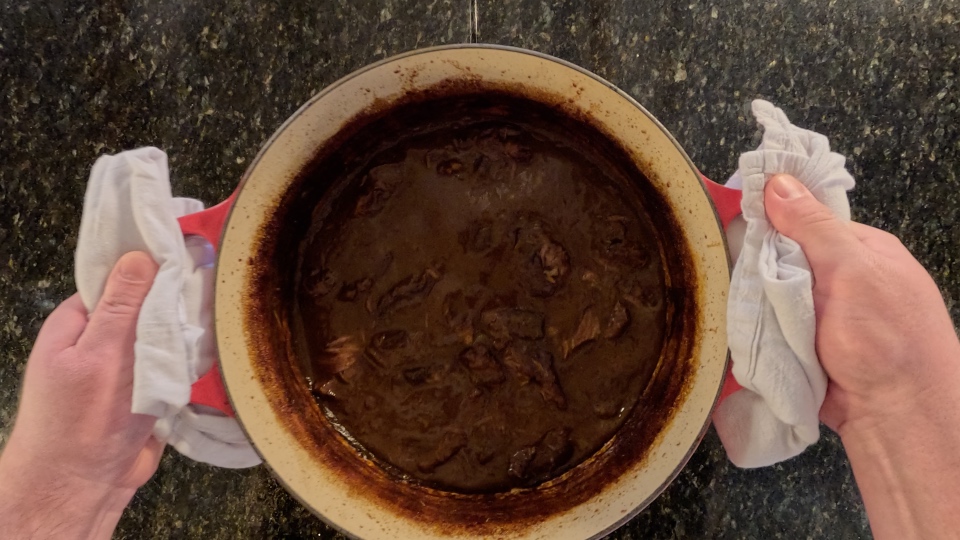
Take the time to make some demi-glace. Enjoy a luxurious amount in a dish like this braised beef, or use it sparingly in a pan sauce like Au Poivre or Marsala. It often makes the difference between good or great and extraordinary. Bon Appétit!
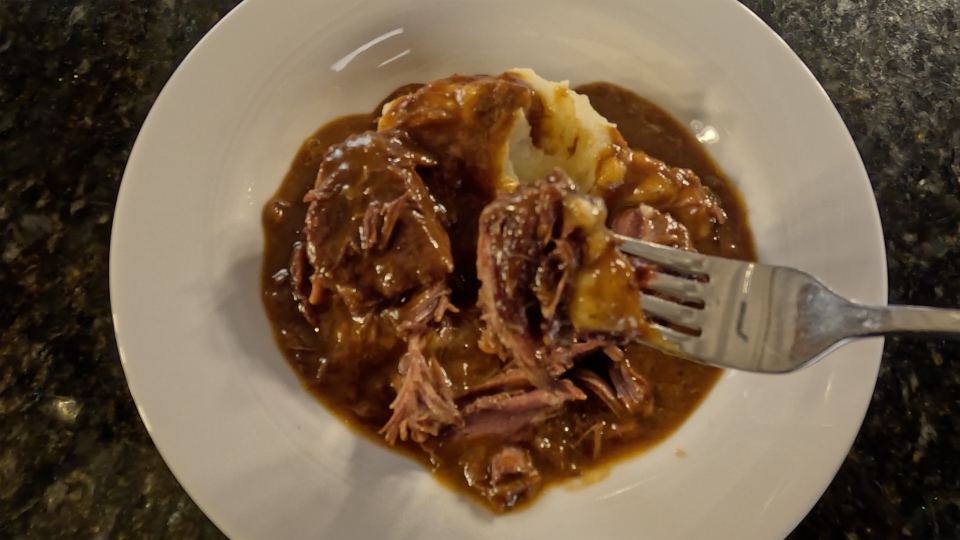
Copyright © 2024 - 2025 Purpose Circus

